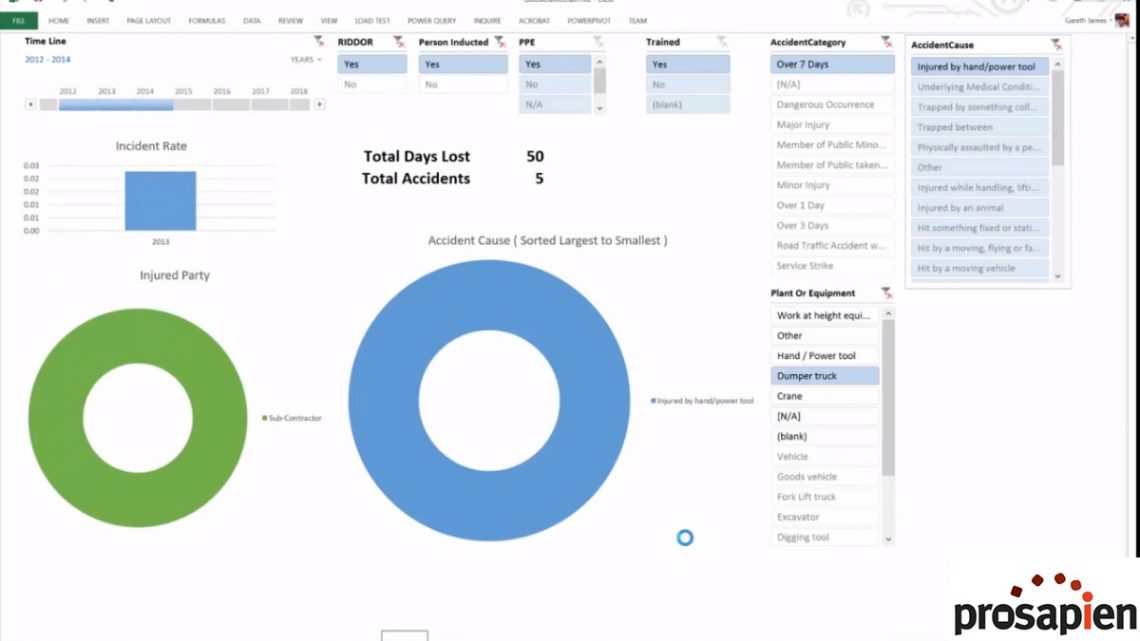Numbers don’t lie and the fact that in 2016, nearly 3 million were reported to have suffered illness or injury in the workplace only establishes the point that employers need to do better for their employees when it comes to guaranteeing safety in the workplace. If you’re a business owner, it is an absolute necessity for you to place your employee’s health and safety as a priority. For this reason, you need to implement an EHS software system in place.
Employees are one of the most important assets in any organization. Company leaders and officials must make sure they have all the safety measures in place and abide by OSHA guidelines in order to avoid any complications in the future. Keeping the workplace safe also affects employee productivity and keep them from quitting and looking for jobs elsewhere.
As a business owner, it is your responsibility to take a close look at the safety practices being implemented in your company. One of the best ways you can start is by looking into a good EHS software to help you manage the safety precautions in place.
EHS Software: what is it?
An EHS software works like a data management system that is intended to help you avoid accidents in the workplace. It also informs you whether your regulatory compliance is updated and it can also predict accidents if and when they happen. AN EH system covers a wide range of functions that focuses mostly on security and regulatory compliance.
Below are some examples of what is normally included in an EHS software:
- Health and safety management program
- EHS training
- Safety data sheet management
- Entry permits management for limited spaces
- Incident investigations management
- Spill responses management
More and more businesses are seeking the assistance of EHS software to help them prevent unwanted incidents such as accidents, work-related injuries, work-related illnesses, and harmful environmental contaminations.
With so many different EHS solutions available today, deciding on the one that works the best for your business becomes a complicated and confusing task. You might want to make things easier for yourself by checking out EHS software reviews for a start. By checking reviews, you’ll be able to learn and understand the products better. From reviews, you’ll learn how you can sign up for free trial or demos, to test the software before committing to the one you like most.
7 Good Reasons To Use EHS Software
Thinking of deploying an EHS software in your company? Below are 7 good reasons why you should!
- Guarantee Safety of Employees
Employee or worker safety is among the top reasons why companies should have an EHS software in place. As your employees are an important part of your company, taking care of them should be a priority. And so, you have to abide by safety standards and regulations imposed by regulatory authorities such as the Occupational Health and Safety Administration (OSHA).
EHS software also helps establish a safe work environment for your employees by providing comprehensive reports and records. Furthermore, when you’re able to avoid accidents in the workplace, you can avoid shelling out money on potential lawsuits and worker’s compensation. You’ll also save time and money on recruitment efforts.
- Compliance To Legal Requirements
Each time an accident or incident occurs within the workplace is a case for a finable offense. Fines are no joke—they can be very costly! Thus, you might want to avoid non-compliance with regards to workplace policies. The kind of function a software is equipped with may vary depending on the industry it is used for.
For example, if you work in the construction industry, your EHS software will prioritize its fall protection feature. This means equipment tracking and custom inspection checklists are also put in place. Meanwhile, if you work in the chemical industry, your EHS system will prioritize inventory tracking and hazmat regulation features.
Because it is centralized, you’ll be able to easily find all the information you need in case someone makes a claim for an accident or injury. The information provided includes:
- Photo evidence
- Statements of witnesses in the scene of the accident
- Steps taken to reduce risk
- Mobile Application lets You Report On-The-Go
Just like most modern technological breakthroughs, software deployment in mobile applications is slowly being adopted on a wide-scale level. This is a big deal for EHS especially for your workers since it allows them to record and report any incidents quickly and more accurately. Some applications are even given offline capabilities, to allow workers to record incidents/accidents even when there is no signal available.
Mobile EHS software apps may have the following uses:
- Provide real-time safety alerts
- For audits and inspections
- For reporting accidents and incidents
- Safety information access on chemicals
- Lower Insurance Costs
If your workplace or factory is found to be unsafe and workers are constantly getting hurt or into accidents, there’s a huge chance your insurance premiums can go up. Insurance companies measure, among others, the costs of litigation expenses, civil liability damages, and worker’s compensation. You can earn a discount if your claim costs are lower compared to competitors faced with the same potential risks.
By increasing workplace safety, you’re eventually reducing potential insurance costs. According to the Occupational Health and Safety Administration (OSHA), good health and safety programs contribute to least 20-40% decrease of injury and illness in a company. When fewer employees get hurt or injured in the workplace, insurance companies end up paying out fewer claims.
- Lower Carbon Footprint
It’s important for companies to be completely mindful of sustainability measures. You will not only be doing the earth a favor by reducing your carbon footprint, but you’ll also end up saving on energy-related costs too. An EHS software provides you with precise information and actionable intelligence from that information, to find out how you can reduce your company’s carbon footprint.
- Generate Data
In an EHS management system, data is tracked, monitored, and centralized. This makes it easy for you to gather insights within your reach, so you’re able to analyze trends and implement safety measures proactively. Such systems not only allow you to add important stats and graphs to your dashboard, but to organize multiple dashboards according to event types, locations and more. It will be easier for you to stay on top of all the processes when you’re able to see the bigger picture.
Dashboards are updated in real time using cloud technology. The moment an accident or some incident occurs at the workplace, the dashboards will be updated right away. This is necessary as it ensures you have all the latest data, statistics and figures you need ready at your disposal.
- Lessen Negligence
Employing an EHS system gives your EHS managers the tools necessary for improving employee safety by preventing accidents and incidences from happening under their watch. It is very important to avoid negligence because if a worker is injured, or hurt, they’ll end up spending time away from work while you continue paying them.
Creating a workplace environment that promotes safety can translate to huge savings for you and your business. According to research, companies can get back $8 for every $1 invested in an EHS system. Each injury prevented can save a company around $37,000, and a fatality avoided can save a company almost $1.4 million! This is a huge reason why reducing negligence in the workplace is important.
A Safe Workplace Needs A good EHS Software System
Implementing a successful workplace safety culture is only possible when organizational safety is efficiently and effectively managed and reflects the values emulated by the management and its employees. In order to completely embrace safety as an important part of the workplace, company leadership must be at the forefront of promoting and fostering a safe work environment. They should set the tone in educating employees on the importance of safety as well as introducing a reliable EHS software to oversee the hundreds, or thousands, of employees in their roster.
Although giving your company’s workplace safety culture a do-over can improve cash flow, doing so without an EHS software will only cause more confusion than unity among your employees. It is important for employees to see and hear directly from the management the significance of a zero-incident culture, for them to be truly invested in the idea. By putting your focus on your “human capital,” your employees will be more productive and eager to work . Customers will also benefit as increased response times will also be a good thing for them. Your company will boost its competitive standing while reducing risks too.
If you decide to adopt an EHS software solutions for your company, use a platform that meets all your organizational needs. Don’t forget to choose a technology partner that not only helps you go beyond ensuring regulatory compliance, but provides you with decision-ready intelligence to help boost performance and reduce risks. Any company can realize its broad and growing impact on its bottom-line by establishing a sustainable, hands-on safety culture.









